Around the globe, the seven-note whistle of the Whimbrel is a spring theme tune for shorebird migration. Where are flocks going to, as they gain height and head north in March, April and May, and why have birds chosen that particular moment to depart?
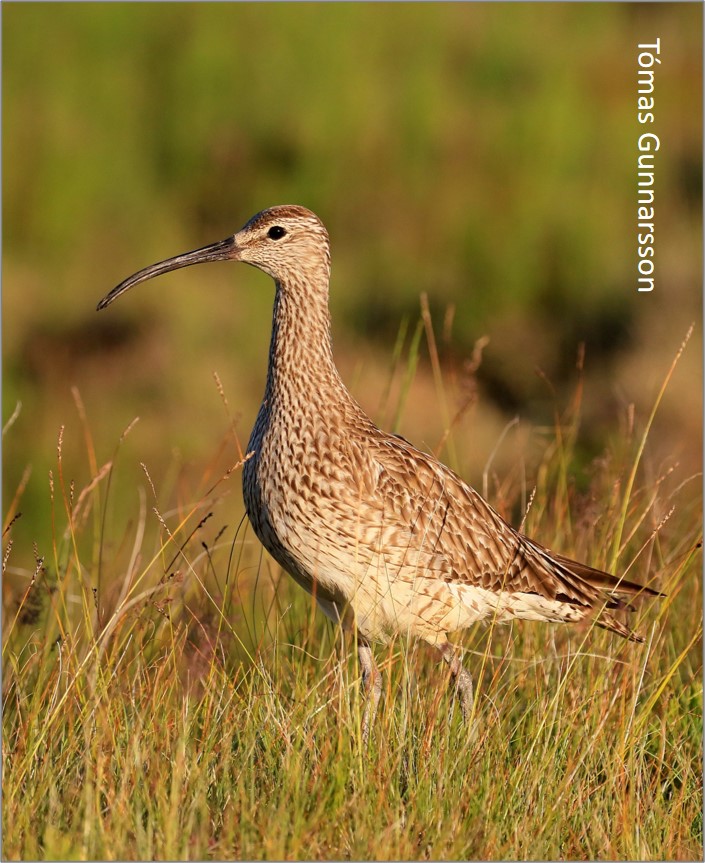
In a paper in Frontiers in Ecology & Evolution, Camilo Carneiro, Tómas Gunnarsson and José Alves analyse individual migration tracks of birds flying from West Africa to Iceland, including journeys made in successive springs by birds that have been part of the same study for several years. Can these birds help to explain how Whimbrel use time and weather cues in their travel ‘planning’ and might their plans change during the course of their lives?
Look up to the skies and see
Almost all of the Whimbrel that nest in Iceland migrate to West Africa after the breeding season, with just a tiny number wintering in Europe.
- Results from bird ringing suggested that return migration in spring from West Africa to Iceland often involves stop-overs in Ireland or Britain, as well as on the Atlantic coast of mainland Europe. See Whimbrels on the move and the paper Migration and non-breeding distribution of Icelandic Whimbrels.
- This pattern was confirmed using geolocators. The autumn journey south is nearly always direct but 80% of flights from West Africa to Iceland involve stop-overs. See Iceland to Africa non-stop and the paper Faster migration in autumn than spring.
- By looking at repeat tracks for the same individuals, it became possible to investigate the timing of events during a Whimbrel’s annual calendar. The most obvious fixed point in the year was departure time from West Africa in the spring. See Whimbrel: time to leave and the paper Why are Whimbrel not advancing their arrival dates into Iceland?
Life has just begun
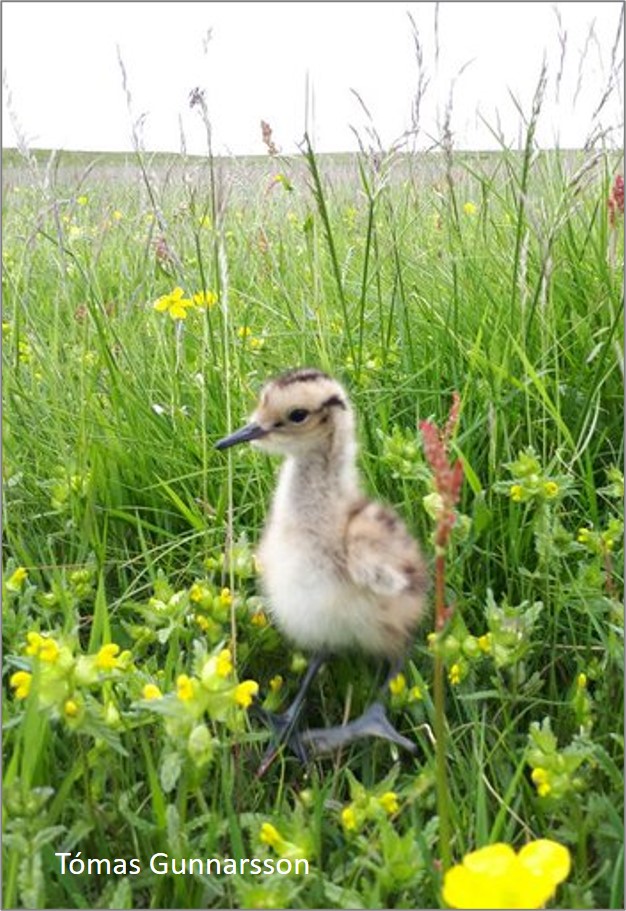
The Whimbrel’s story starts in Southern Iceland. It would be great to tag chicks when they hatch, in order to learn what happens to juveniles in their first autumn, as they head south without parental guidance. For the moment, however, Camilo Carneiro, José Alves and Tómas Gunnarsson are focusing on parent birds which they have been catching on their nests since 2012.
The research summarised in the paper at the heart of this blog uses data from 66 retrieved geolocators that have been carried by a total of 39 individuals. Light data, temperature readings, conductivity and the timing of contacts with water all help to determine the start and end points of individual flights.

Any way the wind blows?
As the authors write in the summary of the paper, “Weather conditions are important during migration, particularly wind and temperature, and can play a crucial role in the timing of events during the annual cycle of migratory birds.” Camilo and his colleagues have investigated how wind conditions, temperature and spring departure date may drive individuals to pursue either a ‘stop-over’ or ‘direct flight’ strategy in the spring. They suggest that one or two of the following scenarios might be envisaged:
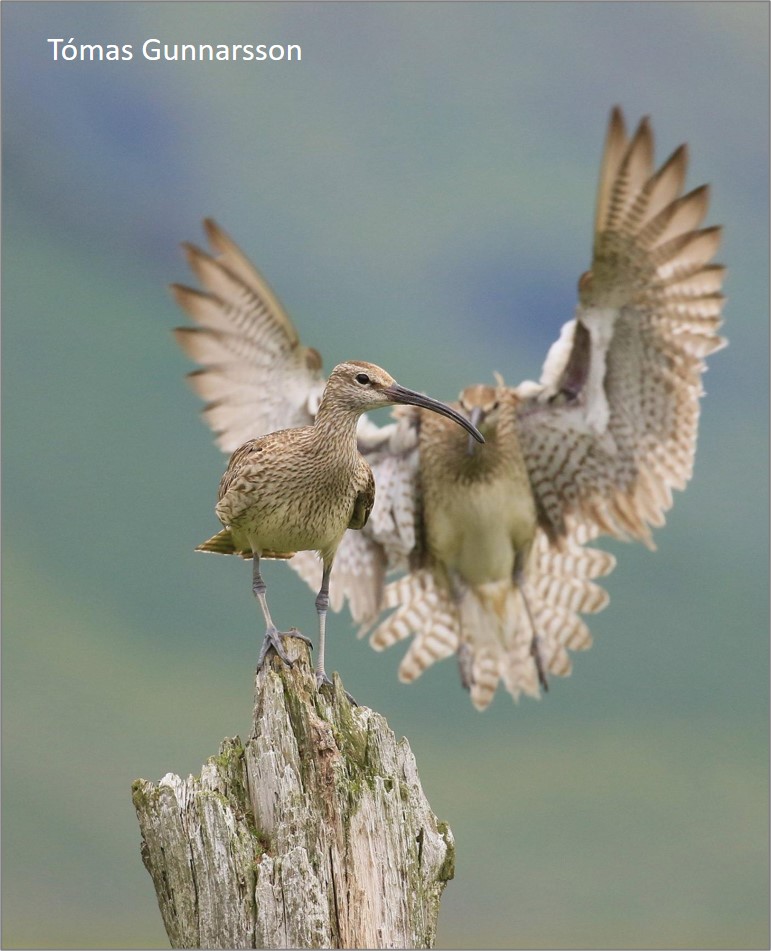
- Whimbrels may make migratory decisions prior to departure, given local weather conditions. If migratory behaviour is defined prior to departure then that would suggest that departure time from West Africa may not be associated with the wind conditions that can assist individuals on the first stage of their journeys.
- Whimbrels may adjust migratory behaviour during flight, depending on conditions experienced en route. As birds fly north, from 37°N (level with the Mediterranean) to 50°N (SW tip of England), they can make decisions to stop off, rather than continue straight to Iceland. Potentially, they could assess the amount of support they have been receiving from favourable winds and assess the positive effect on fuel reserves. Temperature could also act a cue to weather conditions in Iceland.
Little high, little low
Wader biologists and birdwatchers will have seen flocks of waders preparing for departure from breeding, stop-over and wintering locations. Birds become restless and groups of birds start to circle and rise into the sky. The first, departing flock may be joined by others, taking off in small groups to catch up with birds that seem to have a plan. At the same time, birds can also be seen dropping out of the flock to wait for another day.
Once formed, a migratory flock will be made up of individuals that may be heading for points that are hundreds or (for some species) even thousands of kilometres apart but will fly together for this next leg of the journey.
Tómas Gunnarsson has seen Whimbrel circling and gaining height at departure from the south coast of Iceland in autumn, suggesting that they may assess wind conditions at different altitudes before making a final decision and setting their course south. It seems plausible that the same sort of thing might happen during spring migration from West Africa. At some stage, with a large number of tracked birds, perhaps it will be possible to study if waders sample wind speed and direction prior to departure and whether decisions made at this point affect the amount of support they receive from wind conditions when on migration. There’s a great paper about how wind affects the migration of much larger Honey Buzzards by Wouter Vansteelant.

Once in the air, birds in a migrating flock can be impeded by headwinds, assisted by tailwinds and pushed laterally by crosswinds. As has been shown when tracking trans-Pacific journeys of Bar-tailed Godwits, storms and pressure systems can provide a sling-shot effect to accelerate progress, cause birds to temporarily abort their journeys or even back-track a thousand kilometres, in order to refuel for another migration attempt.
Nothing really matters
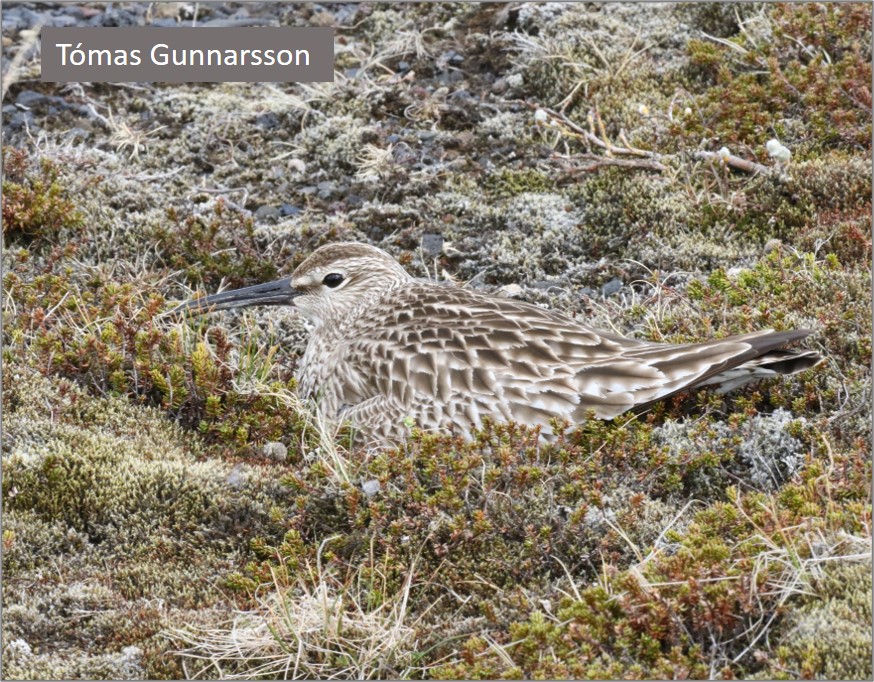
Camilo and his colleagues compared 9 direct flights with 48 that included stops in Portugal, France, Ireland and north-west Britain. Birds that departed later tended to undertake direct flights. Interestingly, they found little evidence that conditions were linked to an individual’s migration option:
- For individuals undertaking either direct flights or stopovers, the wind conditions at departure did not differ from winds during the previous seven days, suggesting little or no selection for wind conditions to initiate the flight.
- Individuals on direct flights encountered similar winds as they passed through the region 37°N to 50°N (Mediterranean to SW tip of England) as those on stop-over journeys.
Too late, my time has come?
For late-departing birds that fly straight to Iceland, there is the potential to catch up with (and even overtake) birds that left earlier and subsequently stopped in countries such as Ireland. In such circumstances, one could imagine that birds still in West Africa in late spring may ‘opt’ for a direct flight. However, the wind patterns over a period of seven days prior to departure were no different to the ones at the start of a non-stop flight. There did not seem to be any weather-related reason for these birds delaying departure as long as they did.
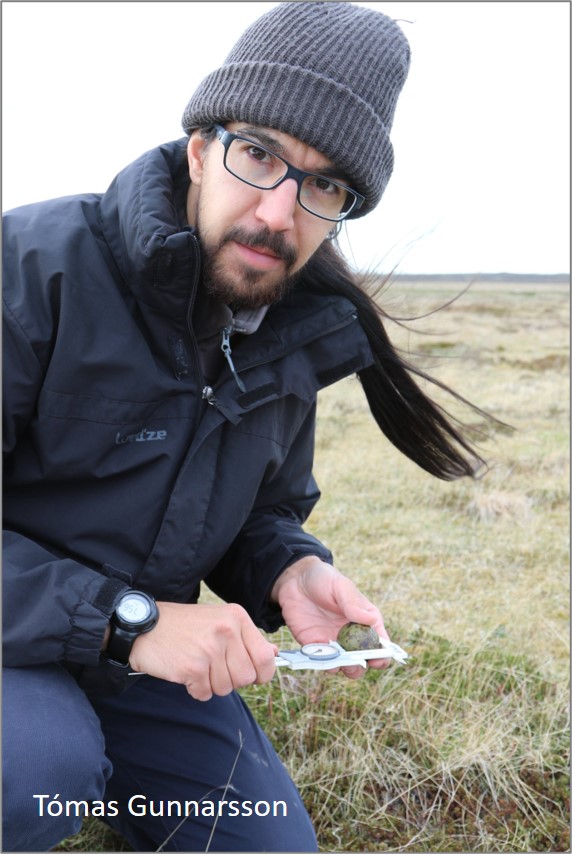
For birds that do stop-off en route in Britain and Ireland, which are relatively close to the breeding sites in Iceland, there are potential benefits, as discussed in more detail in the paper:
- Individuals might be able to assess (remotely) the weather conditions at their breeding sites if there are links between weather patterns in Iceland and those in Ireland and western Britain. If this is the case, then they can adjust the start of the final Atlantic crossing so as to arrive in Iceland when conditions are likely to be favourable.
- Whimbrels can feed up in Britain & Ireland, potentially arriving in Iceland in better condition than birds that have flown directly from West Africa.
Carry on, carry on
The fascinating thing about being able to track individuals is that we are starting to understand the conditions that may lead to the migration patterns we see at the population level. In other WaderTales blogs, some of the key processes and patterns have already been discussed:
- Potentially, arriving in breeding areas early may confer advantages which can be explained by the ability to nest again if a first attempt fails. See Time to nest again? based on the paper Why do earlier-arriving migratory birds have better breeding success?
- The timing of migration is driven by new generations, rather than by individuals changing what they do. See Generational Change based upon Mechanisms driving phenological change in migratory species.
- Birds can make up for the ‘disadvantage’ of flying further south if they make an early spring movement to a staging area closer to their breeding grounds. See Overtaking on migration and the similarly titled paper.
- Once birds are locked into a particular pattern of migratory timings they stick with them – they don’t know that there are better options. See Travel advice for Sanderling based upon Low fitness at low latitudes.
Given this body of knowledge, suggesting little flexibility once an individual’s phenology is fixed, one might expect that an individual Whimbrel, travelling from West Africa to Iceland, would adopt the same migration pattern in subsequent years. Tagged Whimbrels, for which there were repeat migration tracks, mostly ‘did the same’ but not always.

Any way the wind blows, doesn’t really matter
The key finding of Camilo Carneiro and his colleagues is that weather conditions are not the main driver of different spring migratory timings in Icelandic whimbrels. As suggested in Whimbrel: time to leave (and the paper Why are Whimbrel not advancing their arrival dates into Iceland?) departure from West Africa is the most firmly scheduled point in a Whimbrel’s annual cycle. However, three birds provide an opportunity to build a modified hypothesis.

In the course of this study of Icelandic Whimbrel, thirteen birds have provided multiple years of data and there have been three cases in which birds have switched migratory behaviour, seemingly contradicting the ‘birds always do the same thing’ theory. In each case, individuals changed from ‘direct-flight’ to ‘stop-over’ and, having changed, they then repeated the ‘stop-over’ option. The fact that all three individuals made the same change hints towards individual refinement of behaviour. Since there appears to be no clear advantage to direct migration, perhaps individuals are moving to a two-stage migration when they discover that this is a possibility?
Is this just fantasy?
This is where the paper stops but it will be fascinating if the research can continue:
- Are changes always going to be in the same direction – from ‘direct-flight’ to ‘stop-over’?
- Most juveniles are thought to fly directly to West Africa. By tracking young birds, caught in Iceland prior to departure, perhaps it will be possible to work out the proportion of first journeys that are direct?
- Young birds that fly south across the Atlantic will not have learnt that there is any land between Iceland and West Africa. Do they retrace their journeys when they fly north again, eighteen months later?
- What proportion of these birds that start on the ‘direct-flight’ strategy later switch to ‘stop-over’?
- If some juveniles stop off in western Europe, on their first journeys south, perhaps these birds also stop off on their first journeys north? That might mean that they never used the ‘direct-flight’ option.
- And how do flocks work? Will it ever be possible to deploy enough trackers to see whether ‘direct-flight’ individuals learn that there’s an alternative option by travelling in flocks with birds that use the ‘stop-over’ strategy.
It’s all fascinating stuff about the Queen of waders!

Anyone can see
The paper featured in this blog is: Linking weather and phenology to stopover dynamics of a long-distance migrant by Camilo Carneiro, Tómas G. Gunnarsson & José A. Alves, published in Frontiers in Ecology & Evolution.
WaderTales blogs are written by Graham Appleton, to celebrate waders and wader research. Many of the articles are based on previously published papers, with the aim of making wader science available to a broader audience.

Fascinating and beautiful post, thank you.
LikeLike
The researchers certainly have their work cut out for them. Fascinating stuff, though. Amazing to think they migrate between Iceland and West Africa. Could they have chosen more different environments?
LikeLike
The article is interesting but the section titles are JUST BRILLIANT!
LikeLiked by 1 person
Reblogged this on Wolf's Birding and Bonsai Blog.
LikeLike
Jonathan Hickling- A fabulous article. Having watched whimbrel on passage migration on the Ribble estuary during recent years with fascination, and also recorded their wonderful trilling calls coming into roost, it’s delightful to learn something about their migrationary journey.
LikeLike
Pingback: The First Five Years | wadertales
Pingback: Migration blogs on WaderTales | wadertales
Pingback: WaderTales blogs in 2020 | wadertales
Pingback: Winter conditions for Whimbrel | wadertales
Pingback: Navigating over a vast ocean | wadertales
Pingback: Navigating a vast ocean | wadertales
Pingback: Whimbrels arrive in Iceland | wadertales
Pingback: A Whimbrel’s year | wadertales